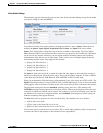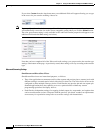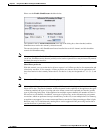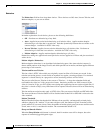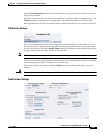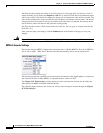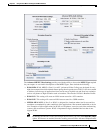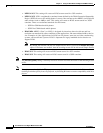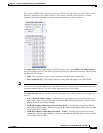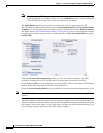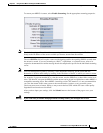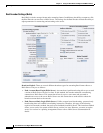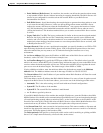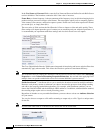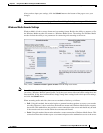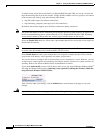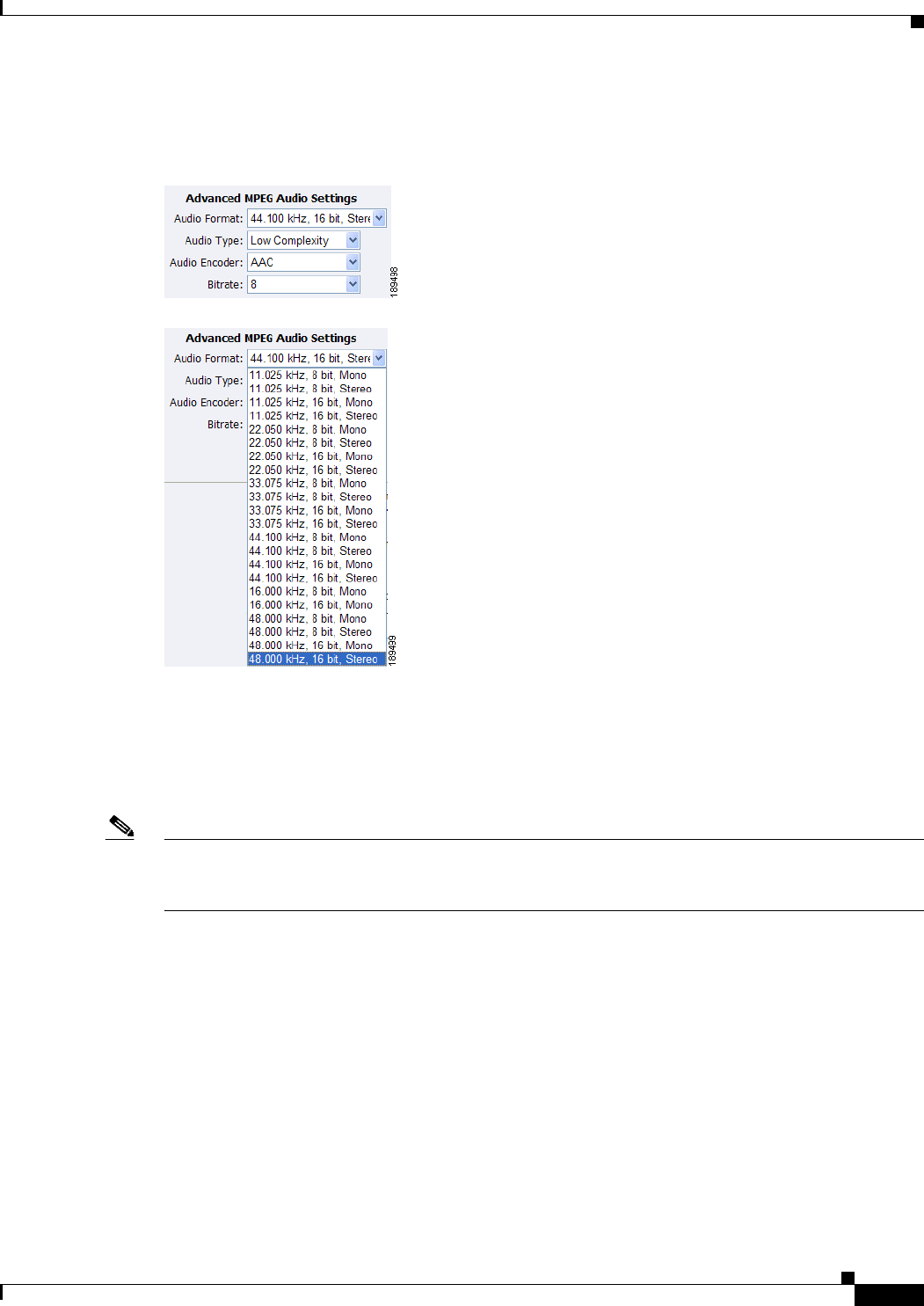
3-31
User Guide for Cisco Digital Media Encoder 2200
OL-17938-01
Chapter 3 Using the Ease Menu and Niagara SCX Web Interface
Niagara SCX Web Interface
The Advanced MPEG Audio Settings, provide you with several Audio Formats, Audio Types, Audio
Encoders, and Bitrates from which to choose. These choices include several options as to audio
sampling, and whether the audio is to be encoded monophonically (mono) or stereo.
The Audio Type setting is only related to AAC Encoding. If you select AMR in the Audio Encoder
field, this setting is not used. The Audio Type field provides you with a drop-down box, which includes
the following two choices:
• Main: This format is the same as Low Complexity, but adds backward prediction.
• Low Complexity (LC): The simplest and most widely used and support AAC audio format.
Note Depending on the player on which the resulting stream will be heard, either choice will use a specific
set of tools to encode the audio stream. You should make your choice based on the requirement of the
playback software or device. The most widely supported format is LC profile.
The Audio Encoder settings provides you with a drop-down box, which includes the following three
choices:
• AAC (Advanced Audio Coding): A standardized, lossy compression and encoding scheme for
digital audio. AAC achieves better audio quality than MP3 and has been named a standard by the
Motion Picture Experts Group (MPEG)
• AMR-NB (Adaptive Multi-Rate Narrow-Band – 8 kHz): An audio data compression scheme
optimized for speech coding. AMR was adopted as the standard narrowband speech codec by 3GPP
and is widely used in GSM.
• AMR-WB (Adaptive Multi-Rate Wide-Band – 16 kHz): An audio data compression scheme
optimized for speech coding. AMR was adopted as the standard wideband speech codec by 3GPP
and is widely used in GSM.



